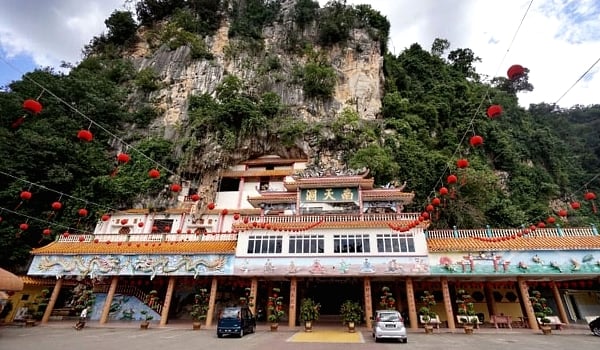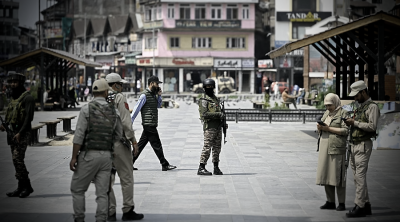Sin Chew Daily
The 19 cave temples in Ipoh were recently served notices from the Perak land and mines department to vacate and stop operation, citing the reason they had been built on government land, although the actual reason could be safety consideration. Land and mines department officials had visited Nam Thean Tong and several adjacent cave temples for observation and taking measures before issuing the said notices.
Cave temples in and around Perak’s Kinta district have been in existence for quite some years. For instance, Nam Thean Tong boasts a history of 154 years while Dong Hua Cave Temple and Perak Cave are 151 and 96 years old respectively, long before the country’s tourist resources were exploited.
Out of the blue, these 19 temples are now told to stop operation, triggering tremendous concern in the local Chinese community. Fortunately through the mediation effort of deputy education minister Mah Hang Soon, we manage to see a ray of hope for these temples’ survival.
Mah, who is also MCA’s Perak state liaison committee chairman, jumped to action in the first instance by leading a delegation of representatives from the 19 temples to meet the Perak land and mines department director on this matter. During their meeting, the director agreed that the cave temples are a precious cultural legacy of the state.
Both sides have reached some preliminary agreement including the withdrawal of the 30-day eviction notices, establishment of a “cave temples pro-tem committee” to deliberate on the land use right and seek solutions to resolve this matter, legalization of temple land use, commissioning professional land survey and evaluation to ensure the safe operation of these temples so that they can continue to operate without causing any damage to the natural environment and historical relics there.
We are glad that this whole thing is now moving in the right direction in resolving the current impasse.
If sufficient effort is made for their overall improvement, coupled with professional safety and environment assessment, and given their rich historical, cultural and religious connotations, we believe these 19 cave temples in Kinta district would be eligible to apply for Unesco historical and cultural heritage status.
If we remain pessimistic, perhaps these temples will end up being evicted due to alleged occupation of government land, and if a solution is not sought, they will very much become a thing of the past. If we manage to solve the problem, then we will rewrite the history for our children.

A passive way of doing things is to keep the status quo. That said, the limestone soil is very unstable and if a severe landslide happens some day, then the government is set to close down all of them. Without enhancing the safety measures, it is a matter of time these temples will eventually be forced to cease operation.
Because of that, Mah, the land and mines department chief and temple representatives have not just sought to revoke the 30-day eviction notices, as keeping the status quo is never the best option available.
It is reassuring that the various parties involved have wisely adopted a more positive and proactive approach. We agree that more stringent land survey and evaluation practice should be in place for environmental impact and safety. If the evaluation outcome confirms that there is no long-term security concern for the cave temples and the natural environment around the limestone cave temples has not been negatively impacted, perhaps the state government should set the rules and specifications for the management and preservation of the environment to prepare these caves temples initially slated for eviction, to apply for Unesco heritage listing.
Indeed, the state land and mines department has not issued the eviction notices to the 19 cave temples on religious grounds.
It is true that indeed some of the temples might have occupied government land, but if the state government is not in urgent need of expropriating the land, then it should not have ordered the temples to vacate so suddenly.
It is easy to destroy a hundred-year-old temple but restoring it is extremely hard. Fortunately the land and mines department chief understands this.
We cannot afford to overlook the security aspect of the cave temples. Of the 99 landslide-prone areas nationwide in the wake of the year-end monsoon, 18 are in Perak. As a matter of fact, even though the state experienced a rainfall far lower than Klang Valley and Johor and east coast states during that time, these sites were already landslide-prone. This could have been what the land and mines department chief was worried about.
A landslide occurred in Perak Cave back in 2009, tons of rocks blocking the access road to the hill, causing 18 local and foreign tourists trapped and killing one. The state government subsequent6ly closed the temple for some time for security reasons.
On security consideration, it is laudable that the state government and temple authorities have adopted the proactive measure of consulting third party professional bodies to improve on the security aspect of the cave temples.
We support the state government’s move to reverse its earlier directive so that the invaluable religious, cultural and historical relics representative of the Chinese community of Perak would not be lost forever.
ADVERTISEMENT
ADVERTISEMENT








































